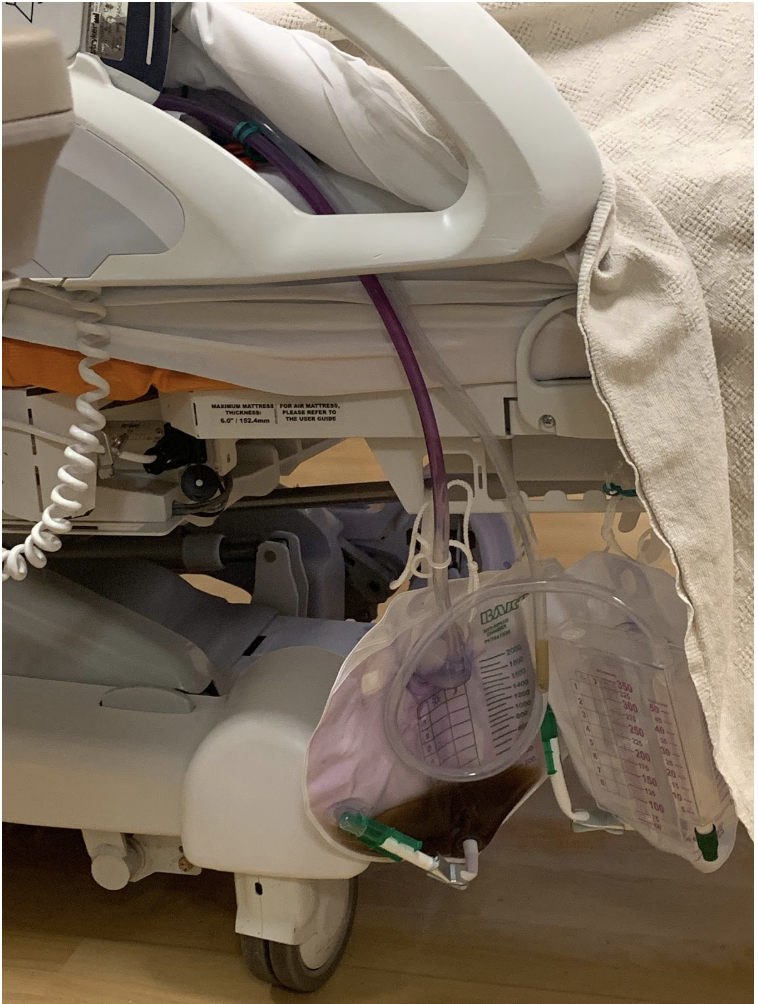Case Presentation: Background: Patients with catheter-associated UTI may have flank pain, suprapubic or costovertebral tenderness. The purple color of urine in patients with a UTI is due to metabolic products of biochemical reactions formed by bacterial enzymes in the urine.Case Presentation: An 84-year-old man with a past medical history of metastatic prostate cancer complicated by rectourethral fistula status-post ileal conduit and loop colostomy, left ureteral obstruction managed with left-sided percutaneous nephrostomy tube presented with one day of blood from ileostomy tube. Patient previously had bilateral nephrostomy tubes, but the right nephrostomy tube was removed after ureteral obstruction improved.The patient’s daughter noted the patient was reporting right-sided abdominal pain and fatigue. On examination, the patient was lethargic and unable to provide a history. Examination revealed a dark purple substance staining the catheter tubing an indigo color.Urinalysis was drawn from foley catheter, ileal conduit, and PCN. Patient was started on ertapenem and daptomycin due to history of severe sepsis secondary to Vancomycin-Resistant Enterococci (VRE) UTI from his ileal conduit and Extended Spectrum Beta-Lactamase-Positive (ESBL) EColi from his foley catheter site. CT Abdomen/Pelvis demonstrated hydronephrosis of the right kidney with concerns for development of pyelonephritis. Urine culture grew >100,000 CFU/mL Providencia Stuartii, >100,000 CFU/mL Proteus Mirabilis, <25,000 CFU/ML E. Coli, and <75,000 CFU/ML Pseudomonas Aeruginosa all susceptible to meropenem. Due to concern for pyelonephritis and acute rise in patient baseline creatinine, a right-sided percutaneous nephrostomy (PCN) tube was placed and patient improved after treatment with a 6-day course of meropenem.
Discussion: This case is novel due to salient findings of purple urine collecting in foley catheter, which can occur with purple urine bag syndrome. This syndrome is associated with UTIs in elderly people, mostly who are constipated. Source of pigment is not clear but may be due to altered tryptophan metabolism related to prolonged transit times in the gut and production of indole derivatives by bacteria such as Providencia spp, Klebsiella, and Proteus. The tryptophan metabolites produce a red and blue color, when combined form the indigo color seen in PUBS. Our patient grew mainly Providencia Stuartii and Proteus Mirabilis on urine culture, both bacteria implicated in this syndrome.
Conclusions: Recognize the unique diagnostic finding of purple urine bag syndrome in elderly patients with catheter-associated UTIs. Identify Providencia, Klebsiella, and Proteus as common culprits for PUBS.

